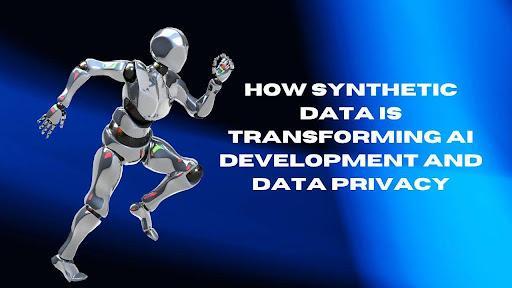
In the rapidly evolving world of artificial intelligence (AI), synthetic data generation is emerging as a game-changer, offering innovative solutions to longstanding challenges to data privacy, availability, and bias. Anusha akkiraju explores how this technology is revolutionizing AI development while maintaining strict compliance with privacy regulations such as GDPR and HIPAA. The applications of synthetic data are vast, spanning industries from healthcare to autonomous vehicles, providing the flexibility needed to accelerate AI models’ performance and ensure privacy.
What Is Synthetic Data?
Synthetic data is artificially created data that mimics real-world data while preserving its statistical properties and relationships. Unlike traditional data anonymization techniques, synthetic data is created from scratch using advanced machine learning models like Generative Adversarial Networks (GANs) and Variational Autoencoders (VAEs). This approach ensures privacy compliance and minimizes risks associated with data breaches, re-identification, and bias amplification.
A Solution for Privacy Concerns
As industries, particularly those in healthcare, finance, and autonomous vehicles, deal with increasing amounts of sensitive data, privacy concerns have become more prominent. Synthetic data allows organizations to utilize realistic datasets without exposing private information. For instance, synthetic patient data can be used to train models for medical research or drug development without risking the breach of patient confidentiality. Similarly, financial institutions use synthetic transaction data to improve fraud detection systems, all while adhering to strict regulatory guidelines.
Applications Across Industries
The versatility of synthetic data has made it invaluable across various industries. In healthcare, synthetic datasets have enhanced clinical research by providing a larger pool of anonymized patient records, especially beneficial in studying rare diseases. Financial services have leveraged synthetic data for better fraud detection, reducing false positives and enhancing market anomaly forecasting. Autonomous vehicle manufacturers use synthetic data to simulate edge cases in driving scenarios, greatly reducing physical testing requirements.
In retail and e-commerce, synthetic data is improving demand forecasting and customer behavior modeling, leading to better inventory management and more accurate pricing strategies. Machine learning, one of the most significant beneficiaries of synthetic data, has seen reductions in training times and costs, as this technology helps generate large-scale, labeled datasets.
The Role of Generative Models in Data Creation
Key to the rise of synthetic data are generative models, particularly GANs, VAEs, and Agent-Based Models. GANs, for instance, have proven especially effective in manufacturing and quality control applications, generating realistic defect images to aid in automated inspections. VAEs have excelled in sensor data synthesis, ensuring high temporal consistency and preserving critical signal characteristics. Agent-Based Models have revolutionized the simulation of complex systems like production lines and supply chains, improving prediction accuracy and reducing simulation time.
Enhancing AI Development Through Synthetic Data
The integration of synthetic data into AI development pipelines has resulted in enhanced model robustness and faster training cycles. In machine learning, the ability to generate endless variations of scenarios means that models can be trained on diverse, high-quality datasets, improving their accuracy and performance. Synthetic data allows AI systems to be trained on rare scenarios that are difficult to capture in real-world datasets, ensuring that models are more generalizable and better equipped to handle edge cases.
In conclusion, synthetic data is transforming the way industries approach AI development and data privacy. By providing a solution to the challenges of data scarcity, privacy, and bias, it is enabling faster and more efficient AI development cycles while ensuring compliance with regulatory frameworks. As Anusha akkiraju highlights, the integration of synthetic data into AI systems is not just about overcoming technical challenges but about paving the way for more ethical, secure, and innovative advancements in AI. The future of AI development, powered by synthetic data, promises to be both groundbreaking and privacy-conscious.